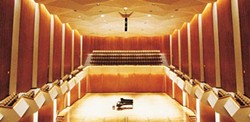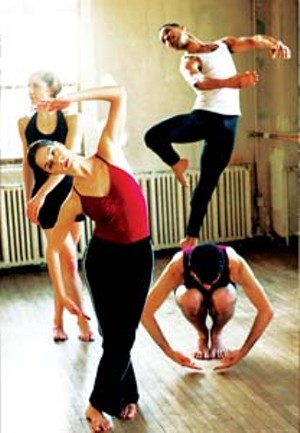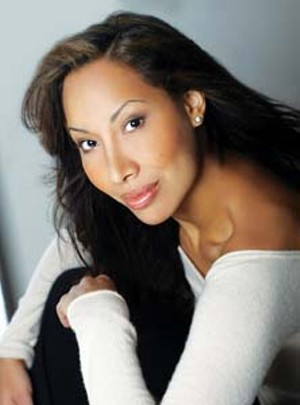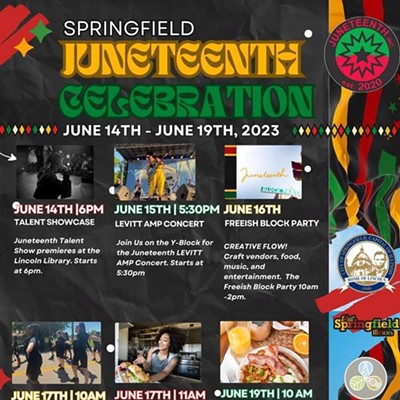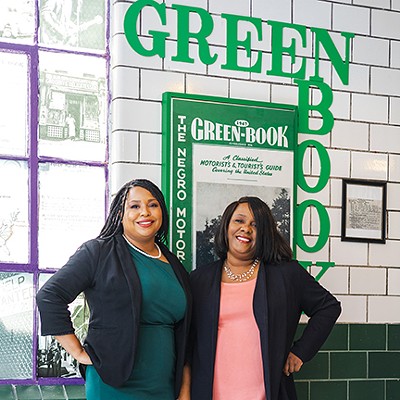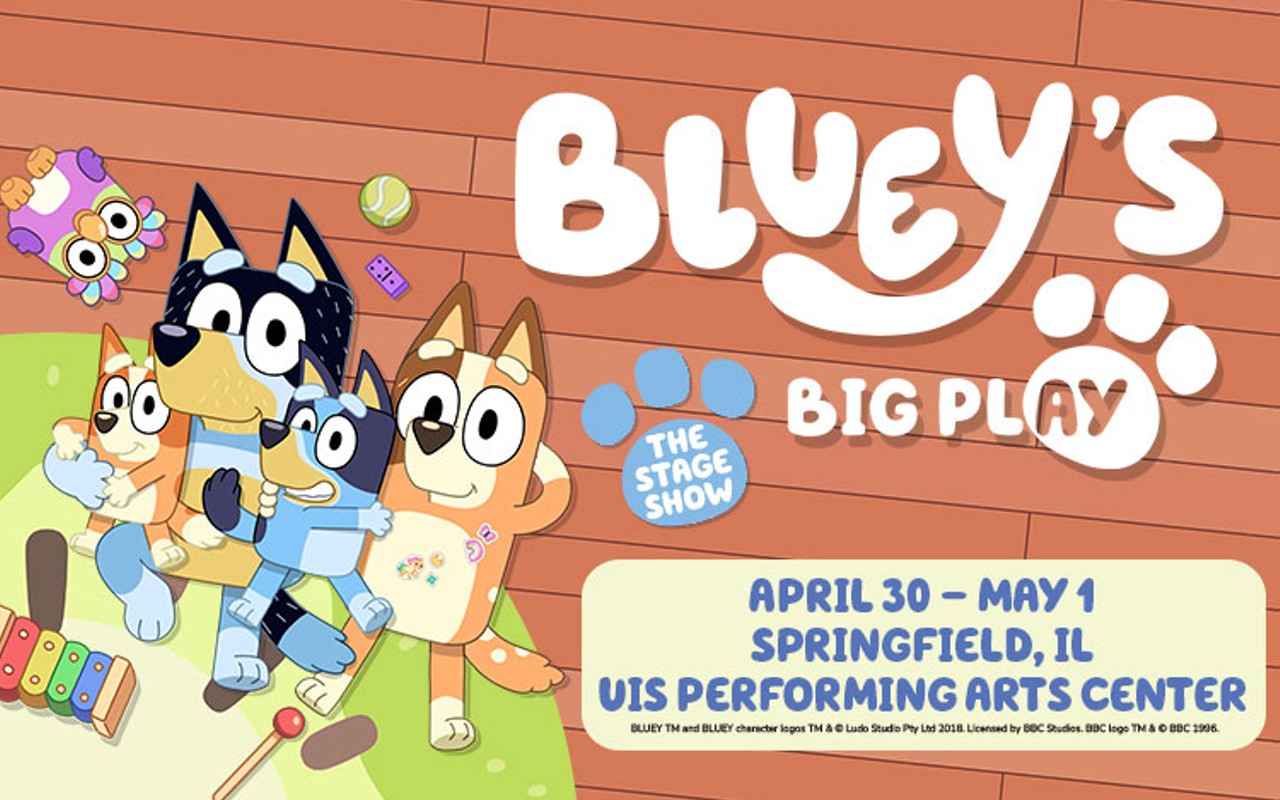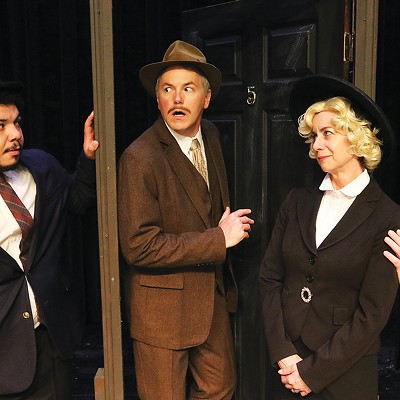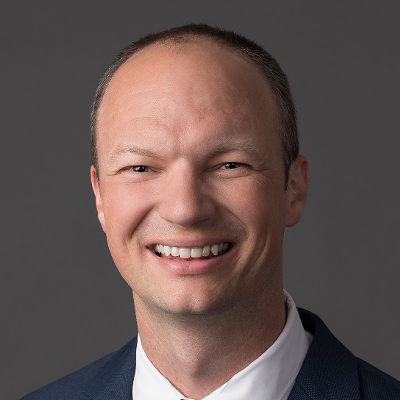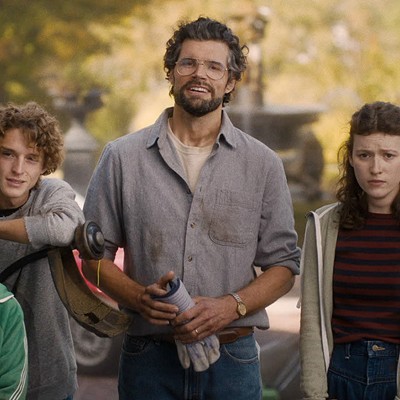Mike Ross, director of Urbana’s Krannert Centerfor the Performing Arts, is hard-pressed to name his favorite place to be inside the University of Illinois’ celebrated arts space.
Ross could pluck Foellinger Great Hall from the list, the center’s largest performing space. He could choose the lobby, home to the opening performances of the biennial guitar festival, sporting artists such as guitar legend Junior Brown and psychedelic-pop practitioner Chicha Libre. Or, he could go below the ground floor to Level 2 where the behind-the-scenes action happens. From the production shops to the rehearsal spaces, Level 2 is an area of Krannert, Ross says, that is “an amazing place to observe the creative process.”
But Ross won’t choose.
“I don’t think I have a favorite place. I love the whole thing,” says Ross, who started running the show at Krannert 12 years ago. “It’s that total notion of the place.”
The place — a distinctive 40-year-old complex just east of the main quad on University of Illinois Urbana-Champaign’s campus — hosts approximately 400 events and performances during the season and boasts an annual attendance of 350,000. The vast majority of patrons who fill Krannert’s seats come from central Illinois, including Springfield, Bloomington, Decatur and other surrounding areas, according to Bridget Lee-Calfas, public information director for the center.
“My hope is that if someone were to experience Krannert Center now as opposed to 12 years ago, part of what they would sense is that broader notion of the creative embrace and a sense that the center is here for everyone,” Ross says.
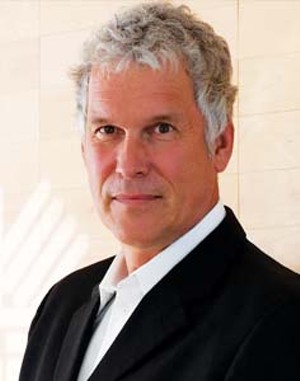
The current season — which kicked off this month with Ellnora, The Guitar Festival — features a blend of styles and genres performed by international and national artists along with talent cut from the center’s own backyard.
In October alone, audiences can see Hip Hop Project: Insight into the Hip Hop Generation presented by the UI Department of Theatre, as well as Nicole Cabell, winner of the 2005 BBC Singer of the World competition and celebrated jazz guitarist Fareed Haque and the Flat Earth Ensemble, among many other performances.
“In any one season, it’s impossible to do all that we would like to do,” Ross says. “It’s impossible to represent comprehensively the full spectrum of creative endeavor that’s going on in the arts around the globe.”
So Ross tries to think of the seasons in terms of rolling three- to five-year chunks of time. He says that the performances at Krannert this year will serve to harmonize with the experiences patrons will have attending performances for the next few years.
“I’m very fond of seeing things that might be viewed as opposites and competitors of sorts — ideas or things,” Ross says. “I’m more fond of viewing those as a continuum rather than opposites.”
Art for all
One of Ross’ goals from the beginning was to embrace the full scale of art — that means making room for Bono and Bach in the season’s schedule. If Ross doesn’t accomplish covering the whole range, he’s barely missing the mark.
From indie rock darlings, The Walkmen, to the celebrated modern dance troupe, the Merce Cunningham Dance Company, and the energetic urban percussion group, Street Beat — all slated to perform this season — the dedicated performance space strives to open the door to all things performing arts.
“For me, it’s not whether you’re talking about high art or low art; it’s not highbrow or lowbrow or middlebrow — I’m very fond of the term ‘no brow’,” Ross says.
The center intermingles the marquee shows — staging approximately 40-60 high-profile acts per season — with shows by students and faculty from the Department of Theatre, Department of Dance, and the School of Music, which includes the opera program.
“The idea was to unify the arts,” Brant Pope, head of the Department of Theatre, says. By working together the entities could create a major arts institution — in the middle of a cornfield. Pope compares what Krannert offers for theatre students to what a learning hospital provides medical students — real-life experience in the profession.
The theatre department puts on six productions a year and three more during the summer break, Pope says.
Pope doesn’t make an attempt to connect the plays he’s staging with the overall Krannert lineup because the center’s programming is so diverse. He says the individual programs contribute to the season lineup and in the end, “it all adds up” to the total experience Krannert Center offers.
The blend of disciplines was a goal from the beginning; the proof is in the building’s design. The space became a place where performing arts could socialize.
Krannert Center houses five original performance spaces and now, the newly created Stage 5 in the lobby. Foellinger Great Hall, an acoustically superior performance space with a tiered ceiling and 2,000-plus seats often hosts symphonies, instrumental soloists and vocal performances, among other shows.
Tryon Festival Theatre houses the School of Music’s opera program and, according to Lee-Calfas, also provides a good stage for dance. Colwell Playhouse seats approximately 650 patrons and mostly accommodates productions from the departments of theatre and dance at Illinois.
The Studio Theatre — the most flexible of the performances spaces — is an intimate, black box stage that welcomes a variety of theatre, dance and club acts. The outside amphitheatre — designed as a Greek-style setting — plays host to music and productions on summer evenings. Stage 5 is often the site of the center’s free performances and music events.
Jazz tenor saxophonist Chip McNeill, chair for the jazz studies program at UI, plays on Krannert’s stages multiple times a year. He says all the program’s jazz ensembles play the center at least twice per year.
Part performing space for professional artists and part teaching ground for budding thespians, dancers and musical performers, Krannert Center’s “public-private partnership” may be the key to this artistic venue’s ability to weather the economic storm.
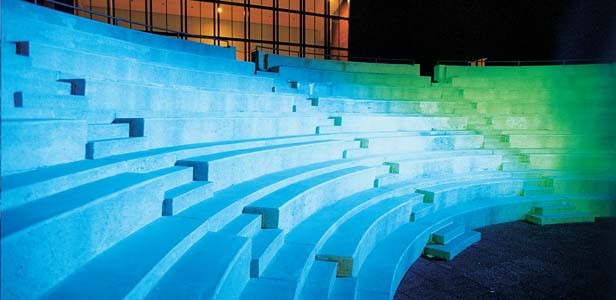
The economics of art
“Everything has been hit by the economic challenges of the last year,” Ross says. “I don’t know a single sector or a single cultural institution — whether they’re based inside a higher education institution or outside — I just don’t know any that haven’t been challenged, so Krannert has been challenged as well.”
But in comparison to stand-alone centers and venues that rely on ticket sales to keep afloat financially, Ross says, Krannert Center counts itself fortunate. University of Illinois foots the bill for Krannert’s personnel, which includes approximately 90 staff members.
The university also keeps the lights on, literally, by covering costs for utilities and general maintenance.
“I know many performing arts centers and programs around the country both inside and outside [of] higher education that have been experiencing exponentially greater challenges than we have,” Ross says.
A large portion of the funding for shows and concerts at Krannert come from individual donors, businesses and grants from arts organizations like the Illinois Arts Council. Despite the economic recession that seems to be zapping dollars out of coffers for the arts around the country, Krannert has seen a boost in giving.
“We have been incredibly fortunate that so far — and I’m knocking on wood to say this — that our donors have sustained their commitments to Krannert Center. In many cases, we see increased gifts being made because they know how hard things are right now,” Ross says.
And the patrons are still coming through the doors.
Krannert Center hasn’t seen a noticeable dip in ticket sales but, Ross says, for Krannert, ticket revenues cover much less than 50 percent of the cost of performances.
“It is the contributed dollars that make the picture whole,” Ross says.
The center continues to strive to keep ticket prices low and offer free programming, such as “Uncorked,” awine tasting and music event happening almost every Thursday. Lee-Calfas says the center’s staff did a lot of thinking about affordability this year.
“We are very committed to keeping ticket prices as low as we possibly can, and that’s part of keeping the doors of Krannert Center opened as wide as possible to all walks of life,” Ross says.
Due to the uncertainty of the economy, Ross admits that he doesn’t know if that level of stability will be sustained over time, but he says he remains hopeful.
“I think everybody feels that everyone is working harder, running harder, than they were 10 years ago,” Ross says.
Krannert Center’s staying power during the recession could translate to positive numbers for the business district surrounding the performing arts venue by way of a plan that has started to come to fruition over the last few years: the Krannert Center District.
Ross attributes the idea to Ian Goldberg at the Canopy Club, a popular music venue across the street. It would connect the neighborhood businesses and restaurants to the center as a highly visible, anchor institution. The idea has gained traction. Ross says the notion of the Krannert Center District envisions the area as “an ecosystem” for entertainment and culture.
The district, situated around the center, includes restaurants, coffee shops and a rock club, among other enriching locales.
“It’s been a growing, quickly developing neighborhood over the last couple of years,” Ross says. “The energy has really started to build very clearly.”
In the next few years, Ross says, he’s optimistic that the designation of the area as Krannert Center District will help the businesses in the area gain exposure, but also will serve the broader population.
“I think there’s a lot happening in this immediate neighborhood that a lot of people in town don’t know about,” Ross says. “So I think there’s great value in that.”
For more information on Krannert Center’s schedule, go to www.krannertcenter.com.
Marissa Monson, former Illinois Times staff member, recently received her master’s degree in journalism from the University of Illinois.

